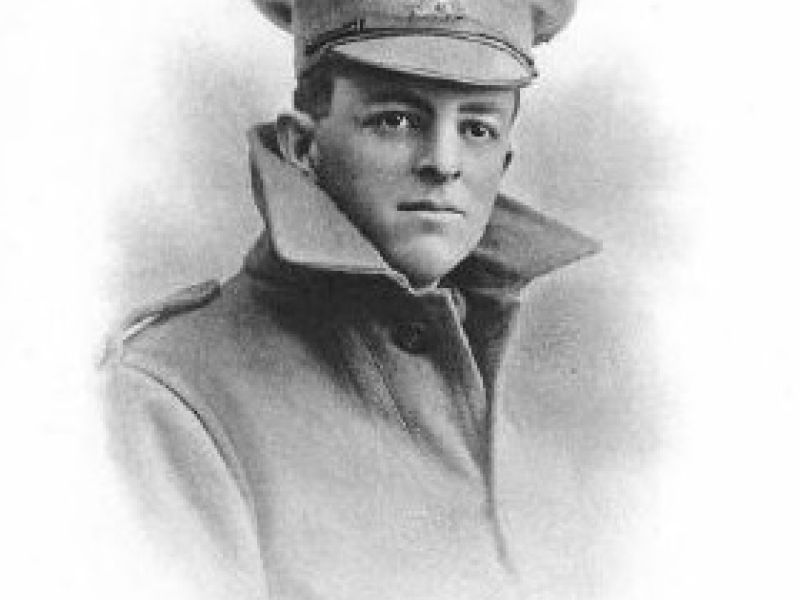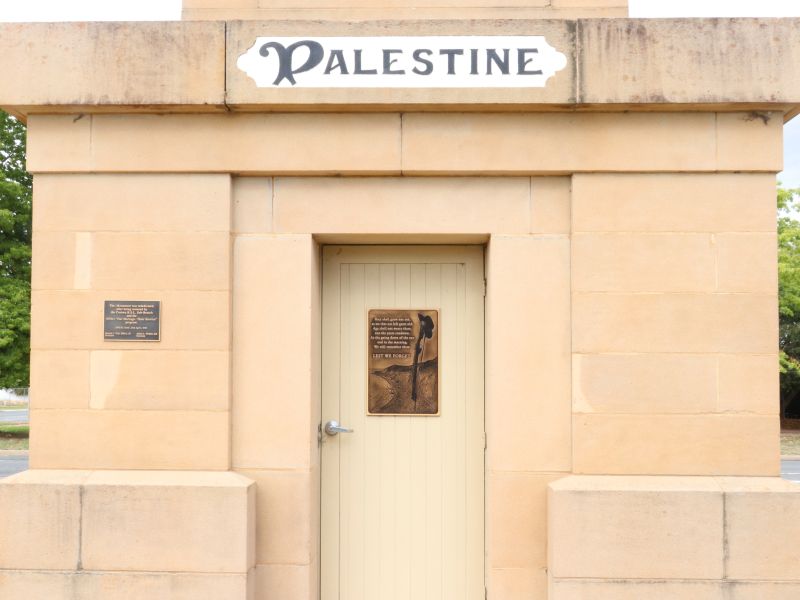Clarence William Johnson
Clarence was born on the 21st of April 1894 at Corowa, New South Wales. He was the third surviving child of Walter Murray and Christina (née Squires) Johnson. Two years prior to Clarence's birth, Walter and Murray lost a son, Harold Verne, who was only seven months old. Two years after he was born, a set of twins, Muriel and Godfrey, died at two weeks. When Clarence was twenty his mother passed away at the age of fifty.
On the 26th of September 1914, Clarence joined the Albury Branch of the Bank of New South Wales as a clerk. Four months later he was transferred to the Wodonga Branch and then, in October of 1915, he was transferred to the Corryong Branch and worked as a teller. During this time he joined the 43rd Infantry Battalion of the CMF (Citizen Military Forces).
Approximately eight months later Clarence applied to enlist in the Australian Infantry Forces. His medical examination was undertaken in Corryong on the 29th of June and he was passed as being fit for active service by Dr Greenham. In Melbourne on the 18th of the following month he signed his attestation papers and took his oath of enlistment. He was allocated the Regimental Number 317 and placed in the 10th Machine Gun Company. After two months initial training at Seymour in Victoria, he embarked on HMAT A73 Commonwealth on the 19th of September at Melbourne. The journey to England took a little less than eight weeks and he disembarked at Plymouth, England on the 14th of November.
Clarence spent the next four months at the Australian Machine Gun Training Depot at Belton Park near Grantham, approximately 170 kilometres north of London. It was here in 1915 that the British Machine Gun Corps was established and a purpose built training centre was established amongst the pre-existing Infantry training centre. Clarence would develop skills in a number of areas including the mathematics of the machine gun, firing, map reading and the use of semaphore flags for communication.
He was posted to the 21st Machine Gun Company while stationed at the training depot and in mid March of 1917 the company left Belton Park and embarked on the SS Donegal to be taken across the English Channel to France. It arrived at No. 2 Camp on the outskirts of Le Havre where the Australian General Base Depot was established.
The 21st spent April in the field supporting infantry battalions in action at Demicourt and Lagnicourt. The gunners were also used in an anti-aircraft role. In early May Clarence was admitted to the 9th Casualty Clearing Station suffering from epididymitis. He was transferred via the 4th Ambulance Train to the 51st General Hospital at Etaples where he remained until the 28th of June 1917. Clarence finally rejoined his unit on the 17th of July.
For part of August and early September the 21st was stationed at Vieux Berquin undergoing a period of rest and training. On the 11th of September they moved by motor lorry to Chateau Segard at Dickebusch in Belgium. Eight days later they moved into the front line. Due to the roads being congested the company did not arrive at their positions until 2200 hours. Work on their gun positions was hindered by the rain and the extreme darkness. Telephone cables that had been laid required constant repairing due to enemy shelling. The following morning the gun positions were also heavily shelled due to the German forces being aware of the major attack that was developing. After the Australians' opening bombardment the infantry was able to take their first objectives late in the morning on the 20th. Unfortunately during the German bombardment 5 OR’s (other ranks) were killed and 19 wounded. Clarence was counted amongst the wounded.
Pte. W.S. Thomas was with Clarence when he was wounded. He explains in a letter written to the Red Cross what happened on the day.
“Died Of Wounds
Re 517 Pte Johnson, 21st M.G.Coy., A.I.F deceased, I was with him in the Gun pit with him and two others on the 20th September 1917 on the Menin Road. A shell landed in our position killing two and Johnson and myself were wounded. The last time I saw Johnson was at the dressing station. He was then on a stretcher and was very cheerful but the poor chap must have got a lot of small stuff from the shell. He was not in any pain and said he felt alright except that his left side was troublesome and I think that the chips from the shell must have been very near his heart as I heard later that he died in the 3rd Canadian Hospital, Boulogne on the 22nd September. He would be buried near there in a soldiers cemetery and there should be no difficulty in locating his resting place. Pte Johnson was always of a very cheerful disposition of medium height and fairly dark complexion and black hair. We always called him Clarrie by name and prior to enlisting was a Bank Clerk and has a brother in the Field Ambulance. I have often heard him speak of his Parents in Australia and was at one time in a Bank at Albury N.S.W.
Letter from:- W.S.Thomas,
44 Queensboro Terrace,
Hyde Park, W.2.”
Clarence’s brother, Private Claude Hamilton Johnson, was close by serving at No. 3 Australian General Hospital. He had been informed of his brother being wounded but arrived at No. 3 Canadian Hospital too late to see him alive.
Clarence was buried at the Lijssenthoek Military Cemetery, near Poperinghe, Belgium. He is remembered on the Australian War Memorial Roll of Honour, the Bank of NSW Roll of Honour Book, and the Corowa War Memorial. For his service during the First World War, he was awarded the British War Medal and the Victory Medal.

 Stephen Learmonth
Stephen Learmonth